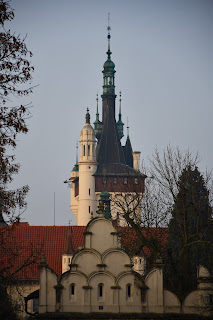An Egyptian Excursion – Day 1: Karnak and Luxor
I have always wanted to go to Egypt. Cairo, Alexandria, Giza, the Nile – I’ve known these names for as long as I can remember. In fourth or fifth grade, our history curriculum focussed on Ancient Egypt: one day we dressed up as Ancient Egyptians and baked what the teachers believed to be the closest approximation of Ancient Egyptian bread. I do not remember what I wore, but I distinctly remember some children arriving wrapped in toilet paper and claiming they were mummies. In the years when we studied Ancient Greece and Ancient Rome, my bedsheets made for a splendid toga.
Since I had
a few vacant weeks before taking up my new post in Nairobi, I finally decided
to visit Egypt this January. I booked my tour with a travel agency, as I wanted
to go up the Nile without the hassle of having to figure out transportation and
accommodation along the many stops. The tour began with one day at the beach in
Hurghada. On the second day – that is, today – we travelled by minibus to
Luxor, checked into our ship, and visited the Karnak Temple Complex. Over the
next few days, the cruise will take us all the way to Aswan, after which I will
peel off from the group and continue to Cairo (the itinerary for the rest of
the group is to return to Hurghada for a beach holiday).
We left
Hurghada at 7:40 in the morning and arrived in Luxor at one o’clock in the
afternoon. The ride did not feel long, though, as we made two rest stops and
spent much of the time listening to our guide’s introduction to Egyptian
culture. One thing I found quite interesting was his framing of why, in the
Muslim world, Muslim women are discouraged from marrying Christian men. In his
view, Muslims believe exactly what Christians believe, except Muslims add
Muhammad to the line of Abrahamic prophets (he asserted that in Egypt, everyone
including Christians believes Jesus was a prophet rather than the Son of God,
which I doubt is true). Thus, a Christian woman can marry a Muslim man, for his
faith fully accommodates her beliefs, but a Muslim woman cannot marry a
Christian man, as his faith would not encompass the full extent of hers.
Mahmud also
went into several thorough explanations of ordinary life and politics in Egypt.
The government, he said, provides a monthly ration of food to all citizens,
which includes one kilogramme of rice per person and various other dry
comestibles. He explained that the military is “a state within a state,”
because it owns many businesses, factories and even gas stations. Since it
relies on practically free labour, there is no way a normal business can
compete with a military-run enterprise. Mahmud also explained mandatory
military service in Egypt thus: “illiterate men” spend three years with the
military, men with a secondary education two years, and men with a university
degree only one. When an Egyptian man is looking for a job, the first thing an
employer will ask for is a certificate proving that he has completed his
military service, as he cannot be employed before that.
The massive
number of young men serving in the military seems to have resulted in the
creation of perfunctory tasks solely to keep them occupied. We passed three or
four apparently pointless military checkpoints on our way to Luxor, each
staffed by a handful of young recruits. The checks were meaningless: the driver
showed the men a piece of paper with the details of our group, they perused it
without interest, and no one ever bothered to look inside the minibus.
After
checking in and eating lunch on our boat, we took the minibus to the Karnak
Temple Complex just a few minutes north of Luxor. The temple was founded in the
twentieth century BCE during the Middle Kingdom, though most of the remaining
ruins date to the New Kingdom period. The complex remained active throughout
the Ptolemaic Kingdom (the kingdom founded after the invasion of Alexander the
Great) but was largely abandoned by the time Constantinus II closed down all the
pagan temples of Rome in 356.
I found the
temple spectacular. Despite being the largest Ancient Egyptian temple complex, it
does not feel mindbogglingly expansive, yet everything about it is colossal.
Karnak possesses the second-largest ancient obelisk in the world – named the
obelisk of Hatshepsut – having once housed the largest ancient obelisk as well.
This latter structure, called the Lateran Obelisk, now stands in front of Saint
Peter’s in Rome. It was transferred from Karnak to Alexandria by Constantine I
and pilfered from Egypt by Constantius II in 357 CE. The largest obelisk of all
time is, of course, the Washington Monument. Karnak also has some of the
largest pillars of the ancient world. Their height and girth can only be
appreciated in real life, but the traces of the original colours can be admired
better on photographs. Beyond those, there are giant statues, including one of Ramesses
II and one of a scarab beetle.
We returned
to our boat at around five, after which I immediately set off to visit Luxor
Temple. This temple, with all its giant statues and pillars, was founded around
the fifteenth century BCE, towards the beginning of the New Kingdom period. The
one sight that typifies this temple is the Avenue of Sphinxes, which runs in
the direction of Karnak and once set the stage for great processions. Not far
away from the temple – perhaps a fifteen-minute walk northward along the river
– lies the Luxor Museum. A small building with two floors, it houses several large
statues, funerary items, and two mummies.


































Comments
Post a Comment